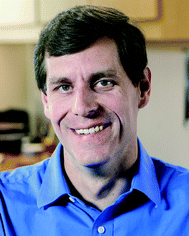2D materials: molecular design and engineering perspectives
Deep
Jariwala
*a and
Mark C.
Hersam
 *b
*b
aDepartment of Electrical and Systems Engineering, 200 S. 33rd Street, Philadelphia, PA 19104, USA. E-mail: dmj@seas.upenn.edu
bMaterials Science and Engineering, Northwestern University, 2220 Campus Drive, Evanston, IL 60208-3108, USA. E-mail: m-hersam@northwestern.edu
The isolation of atomically thin sheets with strong in-plane bonding from weak van der Waals bonded bulk crystals has led to a period of sustained interest and excitement across diverse disciplines of chemistry, physics, and materials science. Since the first isolation of a monolayer of graphite (i.e., graphene), many layered crystals have been identified and isolated down to monolayers or individual unit cell thicknesses. As a result, a wide range of two-dimensional (2D) crystals are now available with varying structures, compositions, and properties. Since 2D crystals have exceptionally high surface-to-volume ratios, their properties are strongly influenced by the local environment and chemical functionalization. Consequently, molecular design and engineering principles hold significant promise for broadening the range of properties and applications of 2D materials.
Towards this end, recent work from chemists, materials engineers, and surface scientists has focused on the development of a range of approaches for decorating 2D sheets with atomic or molecular species. These efforts have resulted in the realization of fundamentally new materials and interfaces with unprecedented structural and dimensional control. Much of the progress in this area has been motivated by issues related to band structure engineering, namely band gap opening in graphene as well as integration of the highly inert, dangling bond free surfaces of 2D crystals with other materials for device applications. For example, the assembly of monolayers of highly aromatic hydrocarbons with in-plane hydrogen bonding has been extensively investigated for that purpose. Due to minimal electronic interactions with the underlying 2D material substrate, these monolayers can act as templates for subsequent covalent chemistry for device integration while keeping the underlying 2D substrate unperturbed.
At the other extreme, the 2D substrate can be significantly altered by the strong interactions that occur during covalent bonding of atomic or molecular species. In particular, covalent modification is often pursued as a means for controlling band structure in 2D materials. Most recently, surface science investigations have utilized both covalent chemistry and noncovalent assembly for functional heterostructure devices. Furthermore, with organic semiconducting layers now available in all low-dimensional forms including 0D (molecular), 1D (polymeric), and 2D (frameworks), mixed-dimensional heterostructures are now being utilized to investigate fundamental physical phenomena such as interface and charge transfer states with diverse applications ranging from energy harvesting to quantum information processing devices.
In this themed collection of invited papers, a diverse set of this class of research is presented. These papers include fundamental studies of covalent molecular design and engineering for functionalizing and doping 2D semiconductors, spectroscopic investigations of charge transfer at polymeric 1D/2D heterointerfaces, local electronic characterization of organic molecular self-assembled monolayers on 2D substrates, and tuning of superconductivity by magnetic organic molecule interactions with inorganic 2D layers. In addition, the collection includes applied papers that explore molecular engineering of field-effect devices for sensing applications, hybrid van der Waals heterostructure for flexible complementary circuits, and tuning of large-scale dispersions of graphene in water using engineered biomolecules. Finally, a review article on doping strategies of 2D transition metal dichalcogenides for renewable energy applications is included. These contributions demonstrate the immense and broad potential of rationally designed and engineered 2D organic/inorganic hybrid materials and interfaces. The interdisciplinary nature of these papers is indicative of this rapidly growing area of research at the interface of chemistry, physics, materials science, and device engineering.
| This journal is © The Royal Society of Chemistry 2019 |


